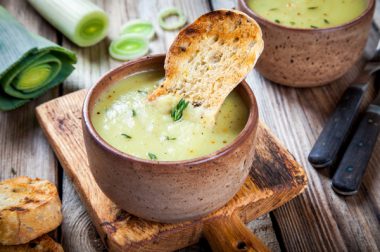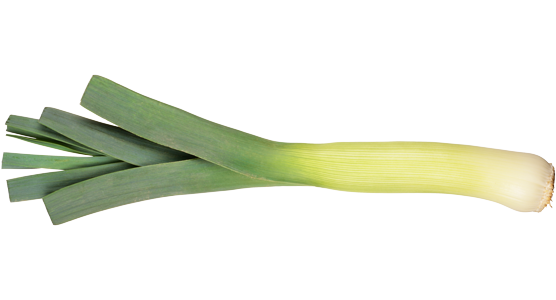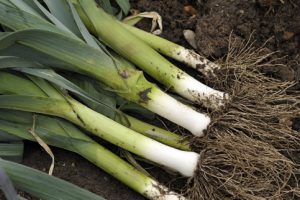Health
benefits
An ideal vegetable to eliminate
The potassium content of leek is very high while that of sodium is very low: this gives it naturally diuretic properties. It stimulates and regulates intestinal transit thanks to its very soft soluble fibers (including inulin) contained in the white part, and which can be given to everyone. The “green” part contains harder fibers.
Leek also contains:
- potassium
- provitamin A or beta-carotene
- many antioxidants (flavonoids, carotenoids, etc.)
He is also :
- source of vitamin B9 (cell renewal, very interesting for pregnant women for the development of the fetus, and in growing children, as well as for convalescents).
- source of vitamin B6 (energy, nervous system, protein synthesis, formation of red blood cells, reduction of fatigue).
- source of vitamin C (immune system, formation of collagen, energy, nervous system, fatigue, absorption of iron)
The sulfur compounds and antioxidants it contains may have a protective effect against certain cancers.
Did you know ? The colder the season, the deeper the colour, indicating a higher content of chlorophyll and anthocyanin, which are themselves signs of a high vitamin content.
Nutritional
composition
When is the right
time to eat them?
Winter and spring.
Leeks are available all year round, but their peak season is in winter. Early varieties are only available in spring.
Vegetable patch or
urban balcony ?
The leek is a perennial plant but grown as an annual, which appreciates fresh, humus-rich and well-drained soils. It is a plant that resists cold very well.
Choosing and
storing
To choose your leeks well:
- The stem should be firm, bright white, without brownish spots.
- The leaves should be very green, neither withered, nor yellowed, nor dried out.
- The large ones are as tender as the thin ones.
To properly store your leeks:
- In the refrigerator: 1 week in the vegetable drawer for early leeks. Winter leeks keep longer.
- In the freezer: cut them into slices and blanch them beforehand.
Tips and
tricks
The leek is prepared…
The leek must be washed well, in plenty of water, separating the leaves to remove the soil and sand. Then remove the root and cut it into slices, or in the cut of your choice (julienne, sections, strips, etc.).
Whole, white and/or green, it is generally eaten cooked and can be cooked in many ways. The young leek is more tender and can be eaten in salads.
Cooking marks:
- 10 minutes: in boiling water or steamed
- 15 minutes: in a pan, braised or wok
Leek goes well with…
Cooked. In a meat stew, with turnips, carrots and potatoes. It also goes very well with oily fish (salmon, mackerel, etc.), in a gratin with cabbages (broccoli, cauliflower, etc.), in vegetable stir-fries (peas, etc.), with curry, poultry, seafood. It is also an aromatic garnish for simmered dishes.
The anti-waste tip ! If you don’t like the green one, which is more fibrous, don’t throw it away. You can reuse it to make a soup, with a few potatoes.
Can everyone
eat them?

Young children
Leeks are very suitable for babies from 6 months of age. However, give them the white part (with a potato) which is milder in taste and easier to digest.
And everyone else
Leeks are rich in oxalic acid, which can be problematic in cases of urinary stones (lithiasis). If you are concerned, seek advice from a health professional.
Rich in inulin, leeks can also cause digestive discomfort in cases of irritable bowel syndrome. It is best to reduce the quantities or avoid them, while waiting for the symptoms to remit.
Where do they come from?
Origins and varieties
Origins
Indonesia, Turkey, France and Belgium are the main producers, the Germans the biggest consumers. It is also the Welsh “national vegetable”.
Varieties
There are several varieties, from the “giant” leek to smaller varieties. Its green leaves sometimes turn blue-grey or steel. It is also early or autumn.



 Millet
Millet  Radishes
Radishes  Varietal Improvement and GMOs
Varietal Improvement and GMOs 










